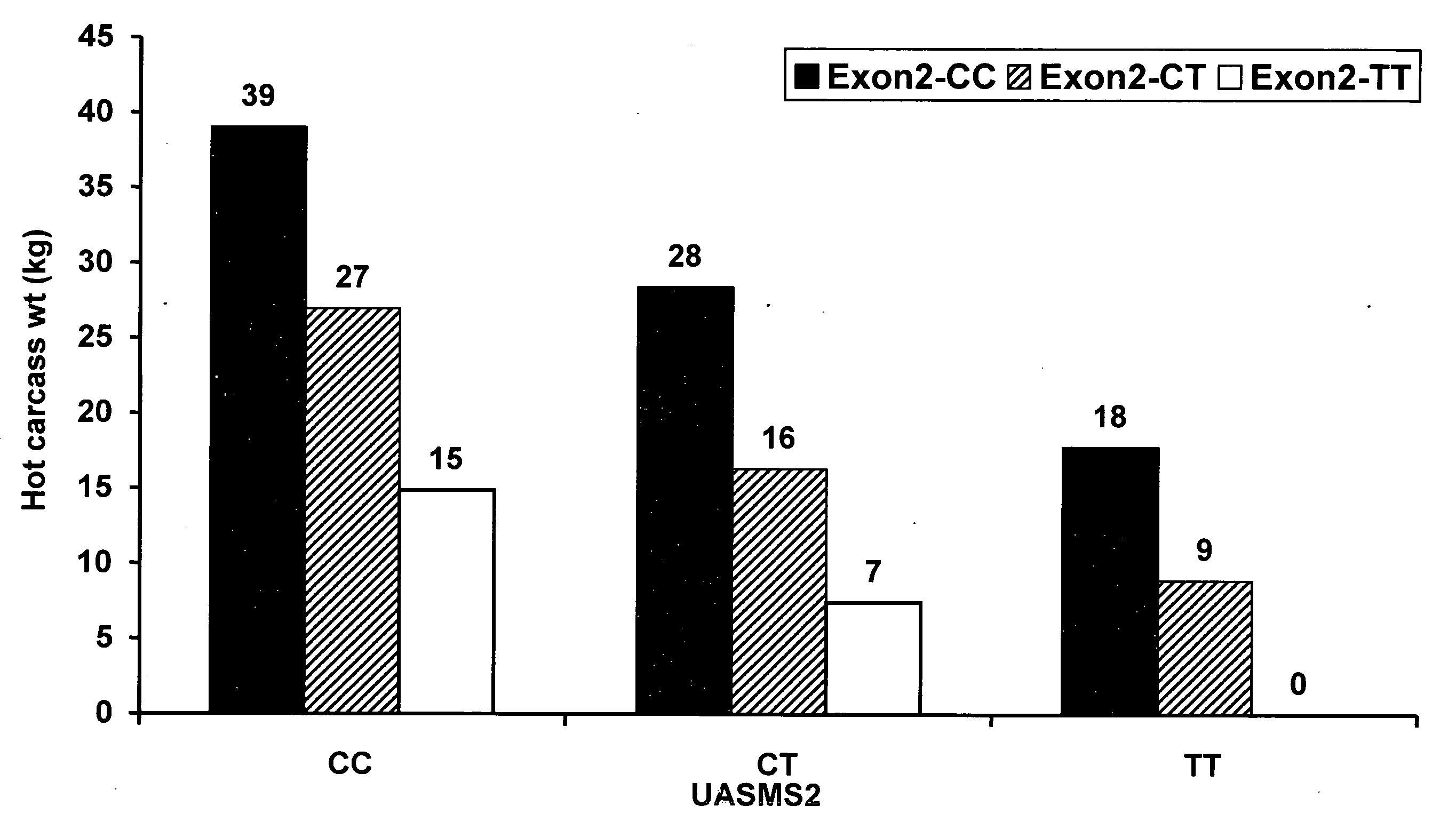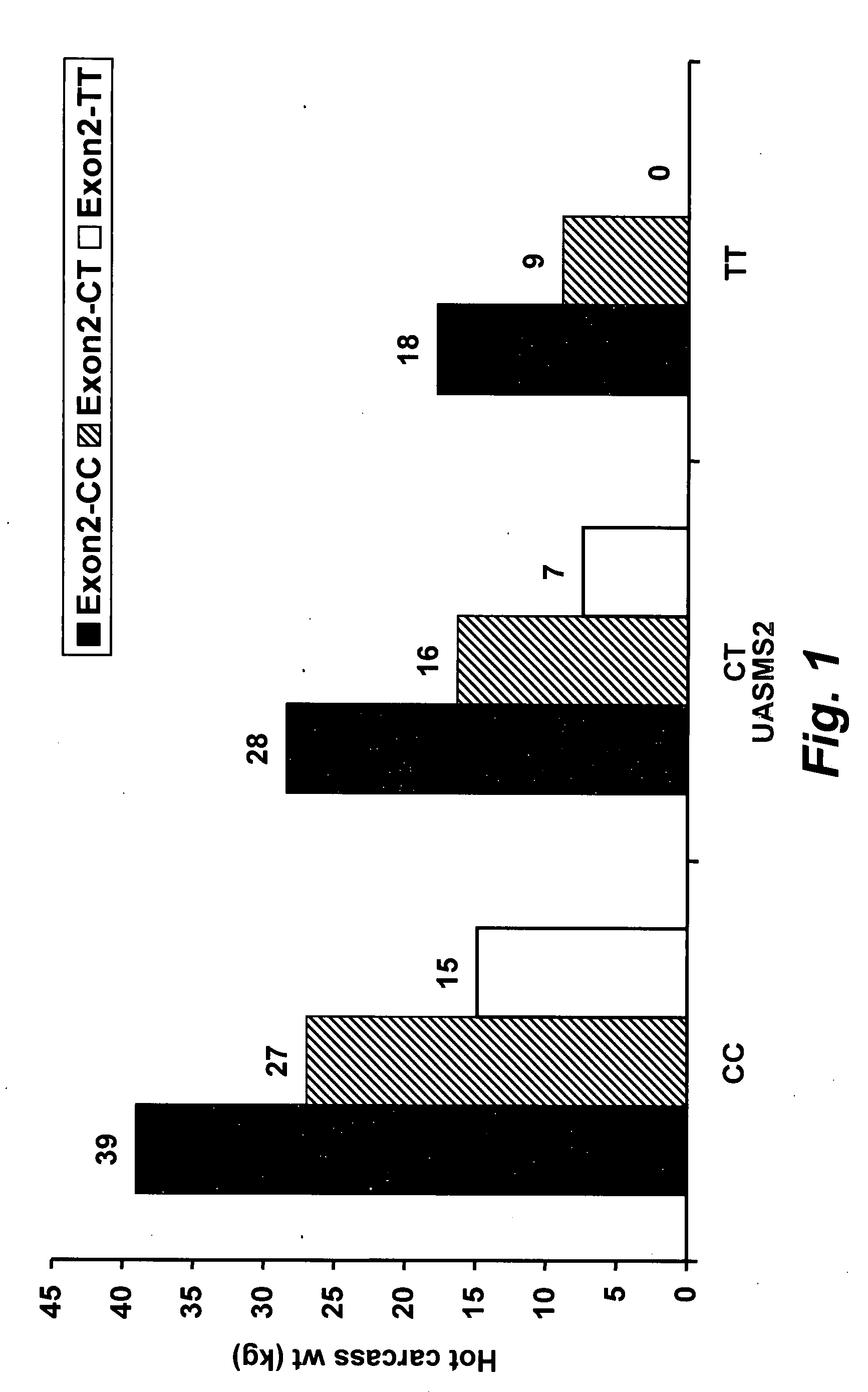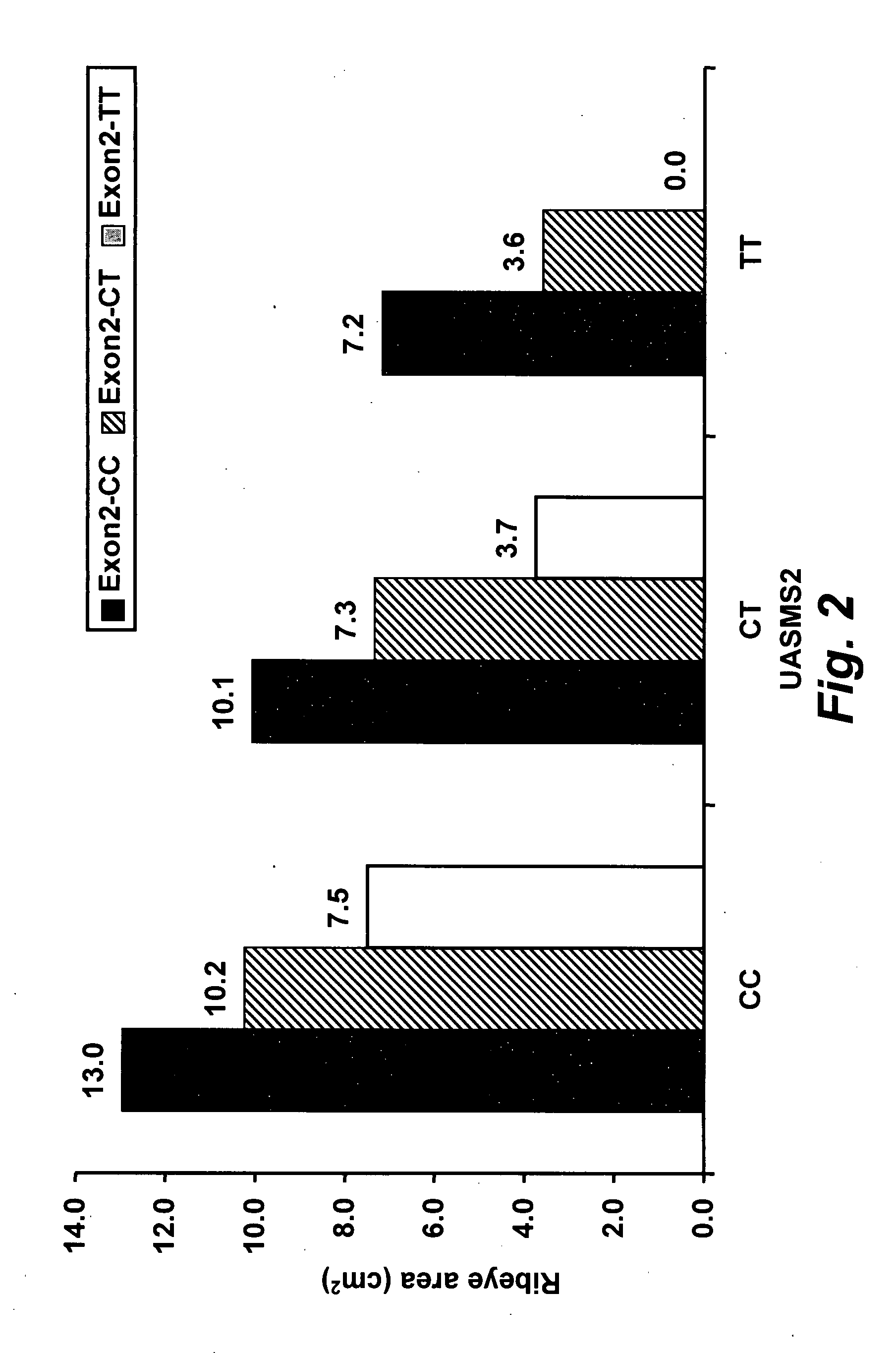Systems and methods for predicting a livestock marketing method
a marketing method and livestock technology, applied in the field of livestock marketing methods, can solve the problems of reduced profits, higher meat grades, and no totally reliable way, and achieve the effects of optimizing the desired traits of the animal, optimizing the feeding regimen efficiencies, and efficiently managing the resources of the livestock producer
- Summary
- Abstract
- Description
- Claims
- Application Information
AI Technical Summary
Benefits of technology
Problems solved by technology
Method used
Image
Examples
example 1
[0169]The correlations between a particular genotype for the ob gene locus with respect to the markers UASMS2 and EXON2-FB for one group of cattle are illustrated in FIGS. 1-6. For example, the greatest hot carcass weight is found for animals having the genotype UASMS2 CC; EXON2-FB CC (FIG. 1), whereas a reduction in marbling score is seen in UASMS2 TT; EXON2-FB TT animals compared to UASMS2 CC; EXON2-FB CC cattle (FIG. 6).
[0170]The experimental data set contained individual-animal information for another group with 2,172 head of cattle. Since complete information was not available on all animals, the results were finally based on 1,668 head of cattle from this group. Although initial genetic information was provided for the genetic markers UASMS1, UASMS2, EXON2-FB, GHR, and DGAT, it was determined that a combination of the UASMS2 (referred to hereafter by the acronym U) and EXON2-FB (referred to hereafter by the acronym E) markers provided the most useful information. Data sets, th...
example 2
Price Data Used in Marketing Simulation Experiments
[0174]To avoid potential time-varying effects that may have occurred in the market, it was assumed that all 1,668 test animals were sold and marketed on the same date under the same market prices. Weekly live and dressed weight prices, reported as the five-market weighted average by the USDA-AMS, were averaged for the year 2004 for use in this analysis. Weekly grid premiums and discounts were obtained from the USDA-AMS National Carlot Meat Report for the year 2004. The average premiums and discounts reported from various packers to the USDA-AMS over this time period were also used. The prices used in the analysis are shown in Table 4.
TABLE 4Price Data Used in Simulation Analysis (Based on USDA / AMSdata for 2004)PriceMarketing Method($ / cwt)GridBase Pricea$118.00Quality GradeAdjustmentPrime$8.29Choice$0.00Select−$8.72Standard−$18.25Yield GradeAdjustment 1.0-2.0$2.93 2.0-2.5$1.67 2.5-3.0$1.24 3.0-4.0−$0.08 3.5-4.0−$0.08 4.0-5.0−$13.70 ...
example 3
Simple Marketing Simulations
[0175](a) The revenue that would be obtained if all 1,668 test cattle were marketed on a live weight basis was calculated. Live weight revenue for each animal was calculated as live weight of the animal at slaughter multiplied by the live weight price shown in Table 2. To determine which genotype would generate the highest revenue on a live weight basis, the mean revenue per head for each genotype, on a live weight basis, was calculated.
[0176](b) The revenue that would be obtained if all 1,668 test head were marketed on a dressed weight basis was determined. Dressed weight revenue for each animal was calculated as the dressed weight of the animal at slaughter multiplied by the live weight price shown in Table 2. Dressed weight revenues were broken down by genotype to determine which genotype generated the highest revenue on a dressed weight basis.
[0177](c) The revenue obtained from marketing all 1,668 test head on a grid was determined by utilizing each a...
PUM
| Property | Measurement | Unit |
|---|---|---|
| melting point temperatures | aaaaa | aaaaa |
| temperatures | aaaaa | aaaaa |
| physical characteristic | aaaaa | aaaaa |
Abstract
Description
Claims
Application Information
 Login to View More
Login to View More - R&D
- Intellectual Property
- Life Sciences
- Materials
- Tech Scout
- Unparalleled Data Quality
- Higher Quality Content
- 60% Fewer Hallucinations
Browse by: Latest US Patents, China's latest patents, Technical Efficacy Thesaurus, Application Domain, Technology Topic, Popular Technical Reports.
© 2025 PatSnap. All rights reserved.Legal|Privacy policy|Modern Slavery Act Transparency Statement|Sitemap|About US| Contact US: help@patsnap.com



